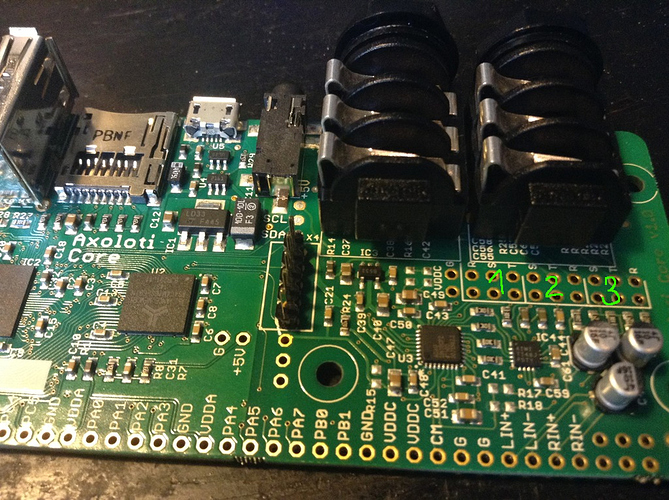Hi, I have question concerning the on-board RST pin outs. If I get it right, they provide the same I/O as the three stereo jacks.
My question is what happens if I connect line level source to the main stereo output pins? (#2 on the picture). Will the source be propagated to the physical jack connector and 'mixed' with actual Axoloti output signal? Or is it completely stupid idea to feed the output jack with additional input signal?
My intention is to use the Axoloti as an master FX unit for another microcontroller based synth, all closed in one box. I could (and I will) just connect it to the input (#3 on the picture) and then pass it thru in the patcher if I want the dry signal. But I thought about adding a physical switch to route it either to Axo's input or straight to the output jack. Does that make sense?
Thanks in advance for any insights!


